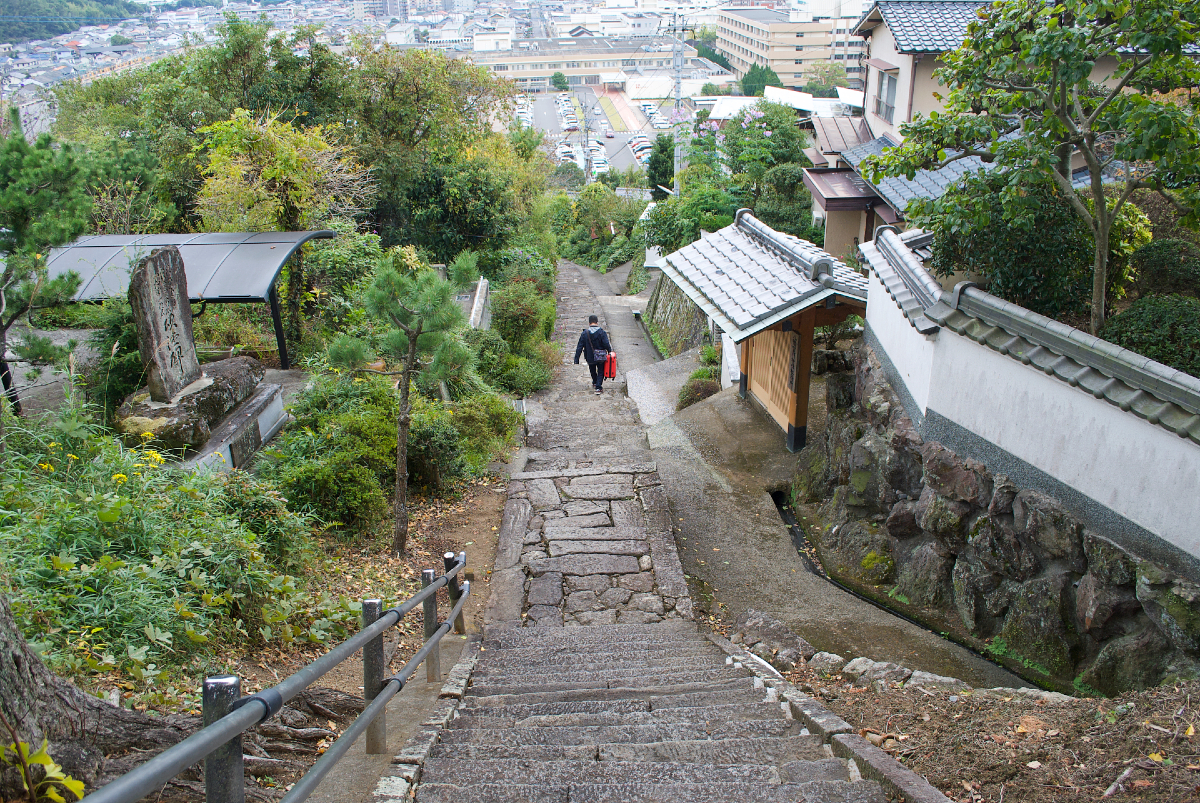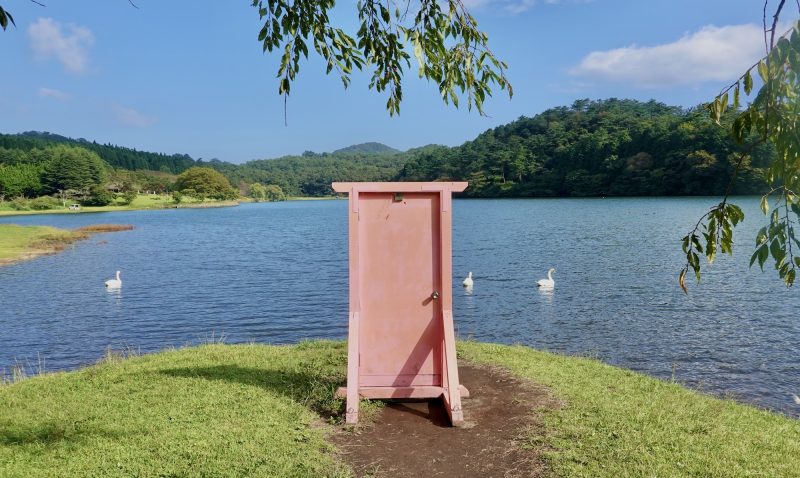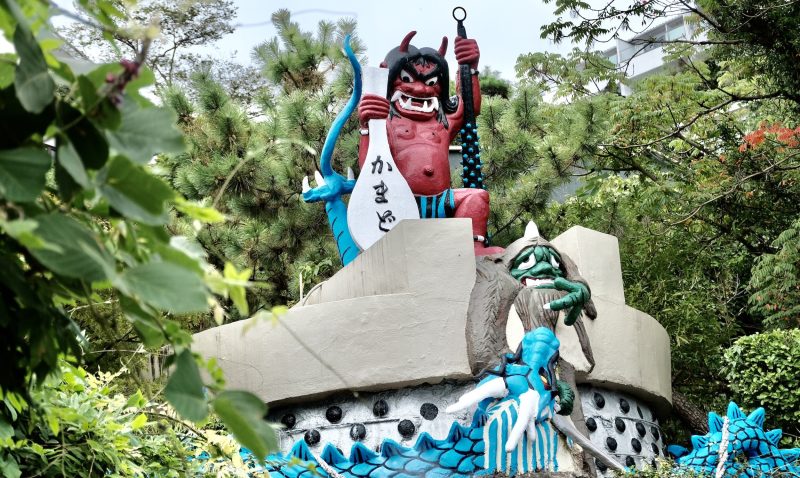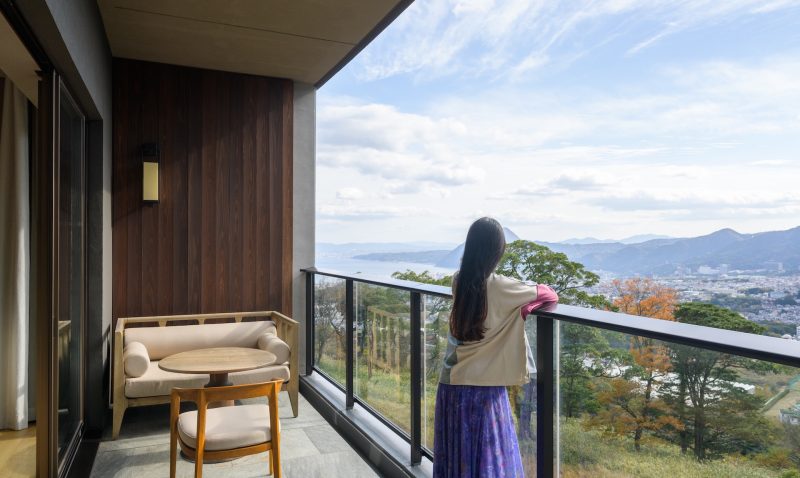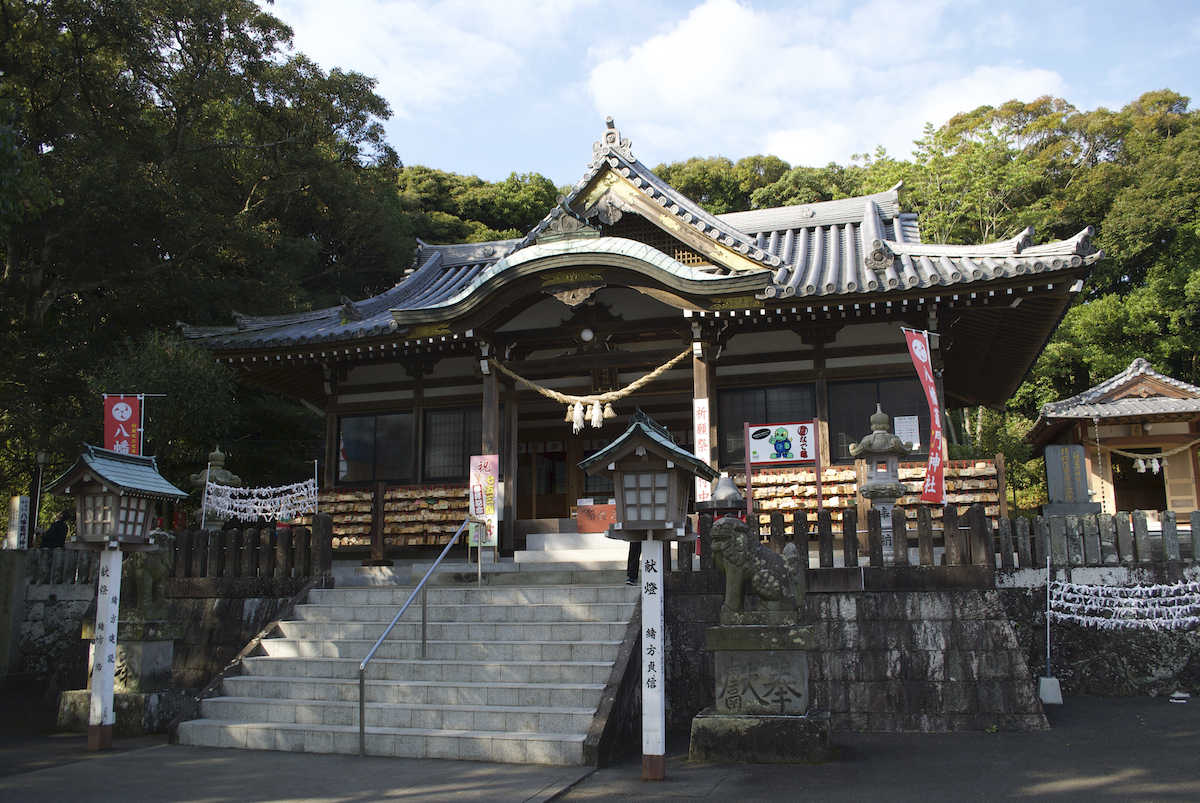
In this article, we take a look at the interesting connections between Demon Slayer: Kimetsu no Yaiba and Beppu.
How to get to Beppu Onsen where the Kamado Shrine that inspired Kimetsu No Yaiba is located.
If you live in Japan, you know the words on everyone’s lips are “Demon Slayer: Kimetsu No Yaiba.” This manga and anime series has quickly conquered the country. Though the manga was released in 2016, and the anime series aired just last year, if you step outside, you are bound to be bombarded with images of Tanjiro Kamado and his friends.
Though everyone is talking about this series, even I was taken aback when we started receiving inquiries about Demon Slayer: Kimetsu no Yaiba’s holy spot in Beppu at our tourist information center, Wander Compass in Beppu Station. Apparently, hardcore fans believe that in Beppu’s Kamado Shrine (which curiously shares its name with series’ protagonist, Tanjiro Kamado) lies many sources of inspiration for the creator.
Translated literally in English as “Blade of Demon Destruction,” Demon Slayer: Kimetsu no Yaiba follows Tanjiro Kamado as he fights demons (“oni” in Japanese) and tries to restore humanity to his demon sister. Naturally, the story has strong connections with Japan’s folklore and Shinto heritage.
Considering that creator Koyoharu Gotōge is from Fukuoka, it is not beyond reason to think that the author found many sources of inspiration in their native Kyushu. And after one can only assume that after much digging, Kimetsu No Yaiba fans have declared one of Kyushu’s most colorful and vibrant towns home to their holy site.
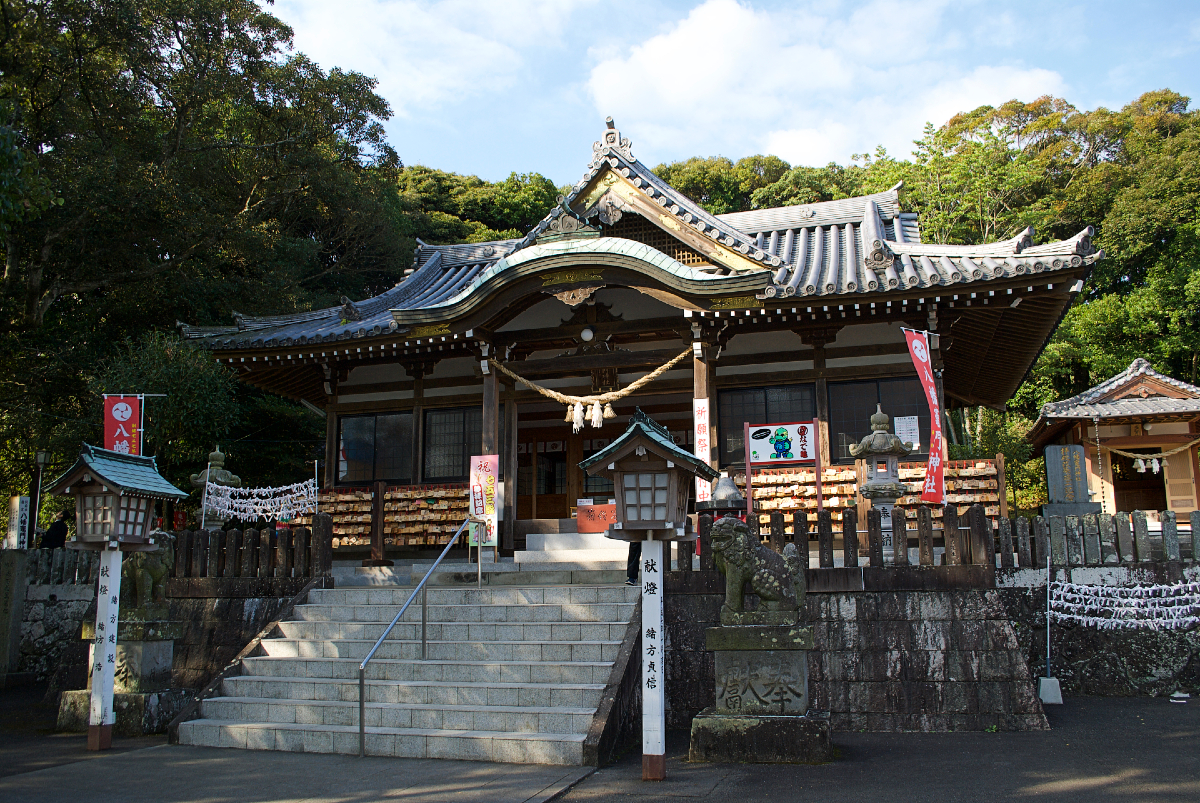
Hachiman Kamado Shrine
Beppu, located in Oita Prefecture, produces a plethora of onsen, most famously the Hells or “Jigoku.” Because of the awe-inspiring heat and appearance of these “Hells”, locals once thought the area to be a cursed land. Unsurprisingly, the folklore of this region retains that hellish imagery. Not far from the famous “Red Hell” or Chinoike Jigoku, Hachiman Kamado Shrine stands. It was built in 727 and lies on a mountain called Kameyama, which overlooks Beppu Bay.
Points That Are Related To Demon Slayer: Kimetsu No Yaiba
To understand the connection between Kamado Shrine and Demon Slayer: Kimetsu no Yaiba, you must first learn the legend of the shrine itself.
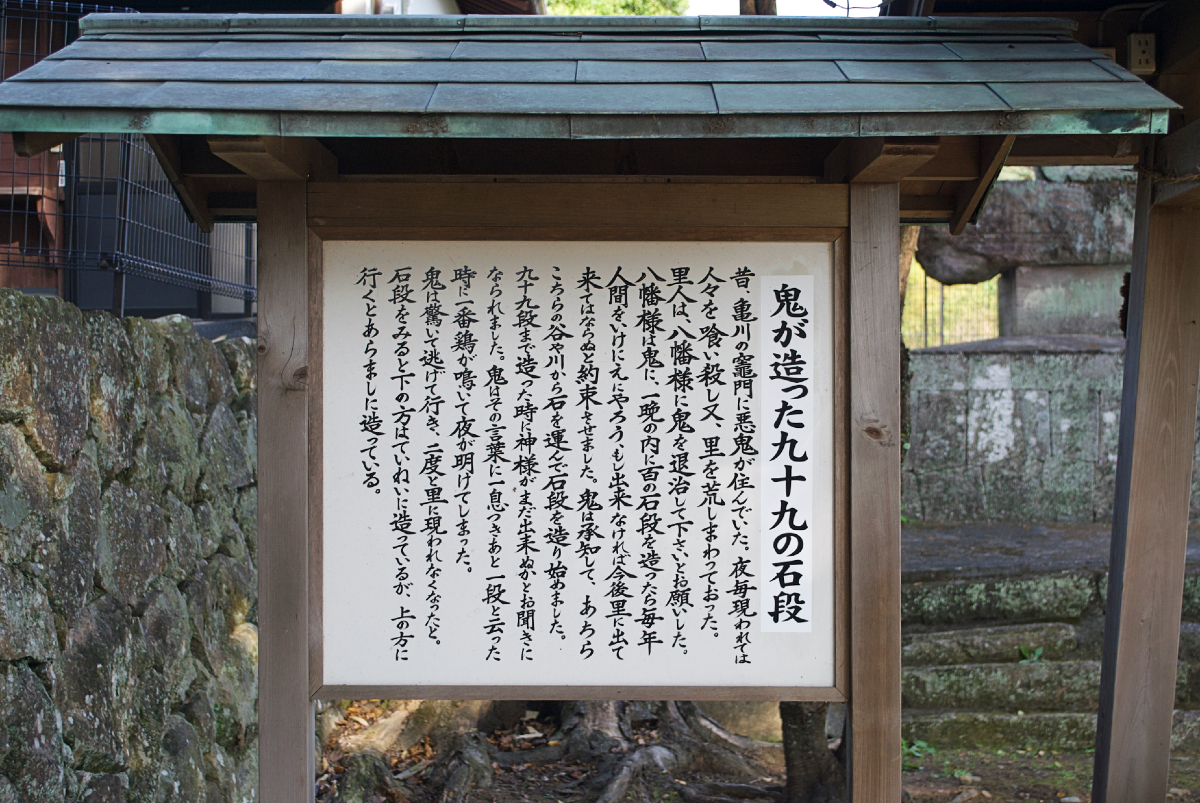
As legend has it:
Once upon a time, there was an ogre in this village who ate humans. The villagers were so troubled that they asked their god for help. The god challenged the ogre to a game, saying,
`I’ll offer you a human sacrifice if you can build 100 stone steps, (in front of the shrine) in one night, but I‘ll boil you in the furnace and eat you if you can’t.’
However, just when the ogre had done the 99th step, the sun rose and a rooster crowed, so the ogre ran away in a fluster, leaving a stone sandal behind.
Still, the god acknowledged the ogre’s efforts for having huilt 99 steps, so, he sent out Ryujin, the dragon god to reform the ogre. Now, the ogre worked earnestly as the gatekeeper of “Kamado Jigoku.” The dragon god Ryujin still stayed in Kamado Jigoku to make sure the ogre would never brew up trouble again.
After that, it is said that when the villagers timidly tried to put their feet in the stone sandal the ogre left behind, they felt empowered immediately, they were able to do much more work than usual, and sick people got well at once!
Did any part of the legend seem familiar?
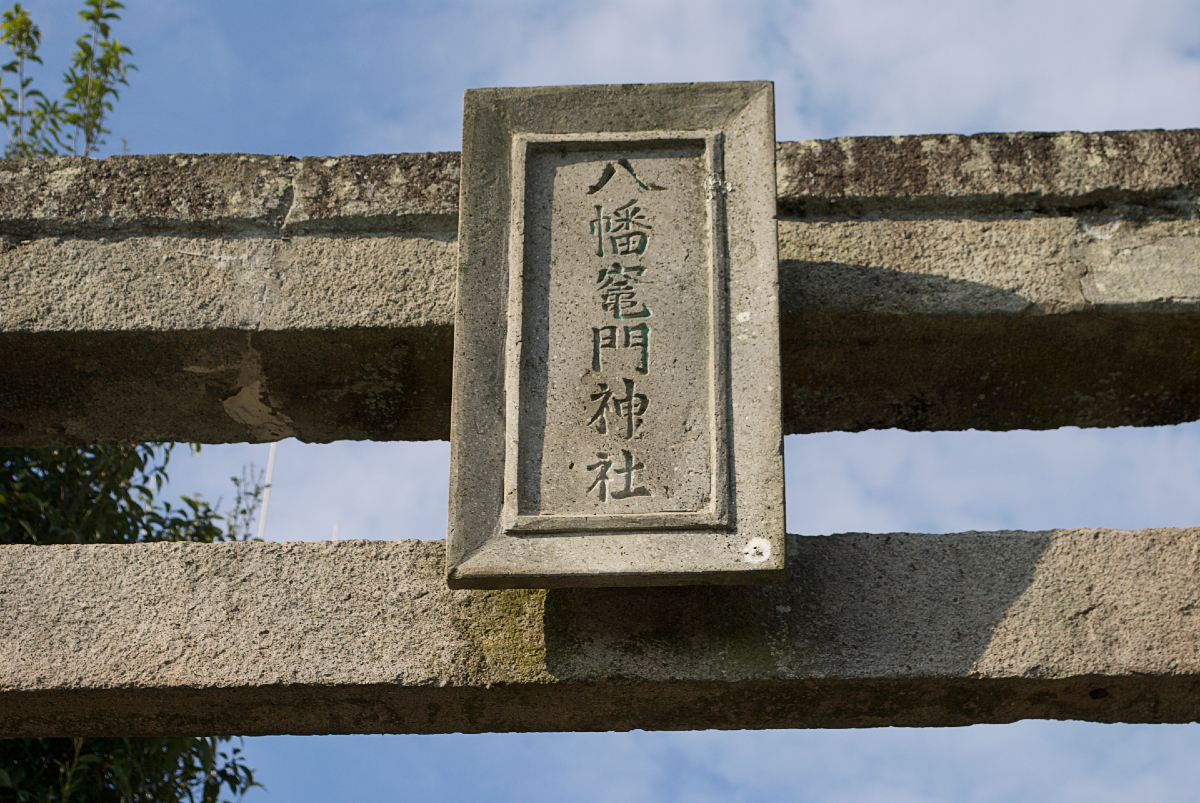
The Protagonist’s Family Name
Perhaps, the most obvious connection between the shrine and the series is the name of the main character. Tanjiro’s last name is Kamado (竈門) and the shrine has been known for centuries as Hachiman Kamado Shrine (八幡竈門神社).
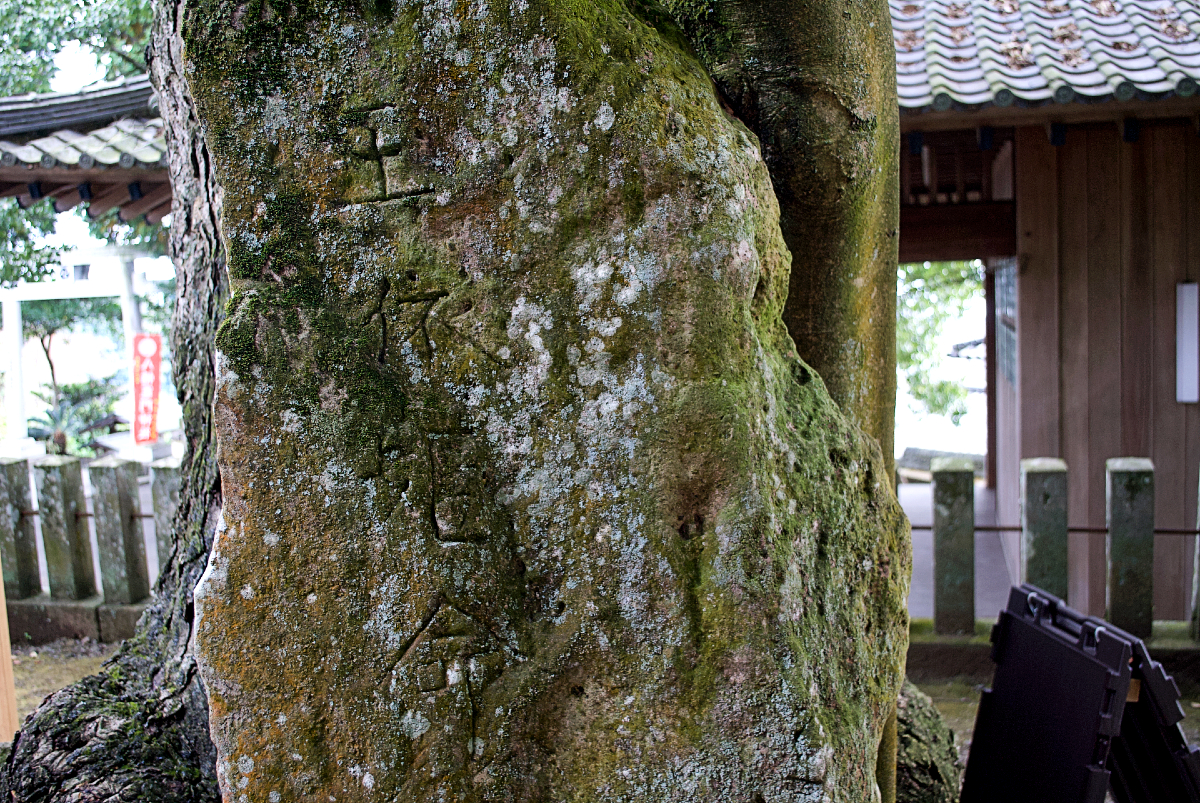
Name Of Doctor
In the shrine, there is a stone carved with the name of Tamayori Hime No Mikoto, a resident god. This name contains the same reading as the series’ beloved doctor, Tamayo 珠世.
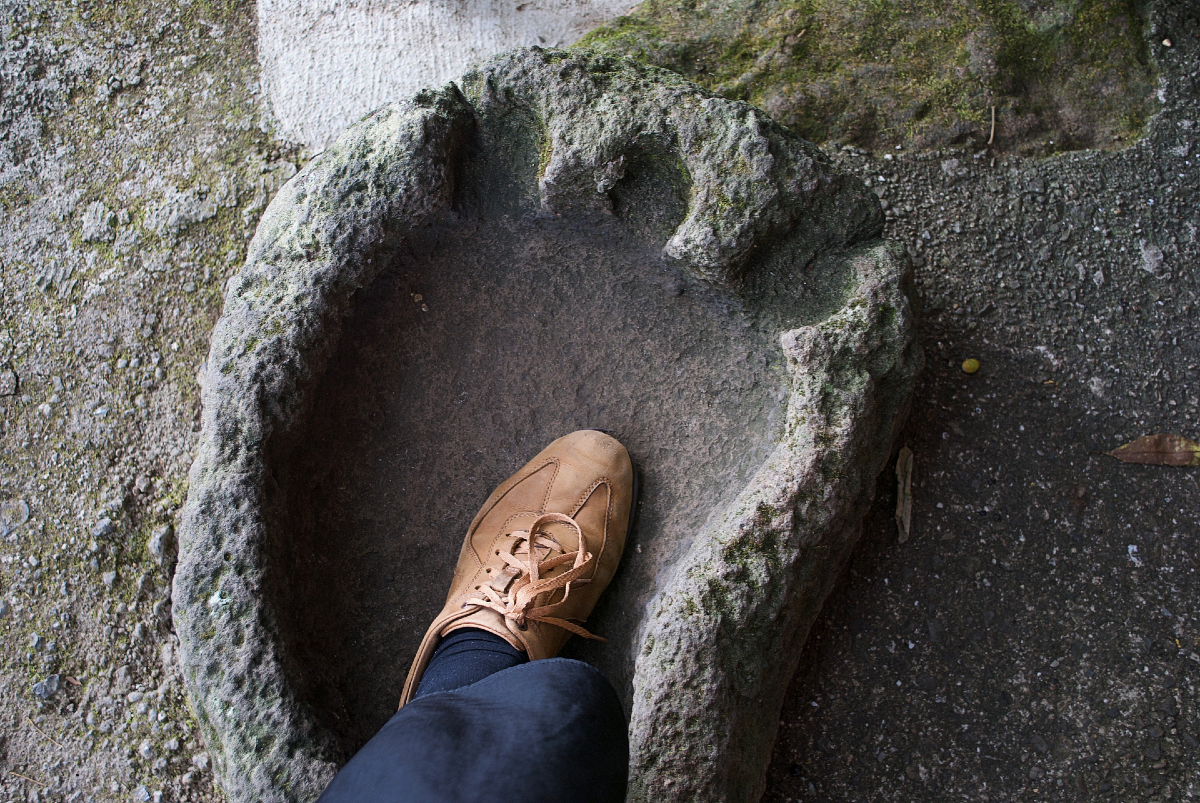
Demon Slayer: Kimetsu No Yaiba’s Human-eating Demons
Another interesting similarity between the two is the appearance of human eating demons or as they say “oni” in Japanese. Just like in the village of the legend, the world of Demon Slayer: Kimetsu No Yaiba is plagued with monsters that crave human flesh. Coincidentally or no, the anime’s demons are weak to sunlight just as the ogre in the legend was chased away by the sunrise. The demon’s footprint still remains here, and if you dare to step into it, they say you will receive power.
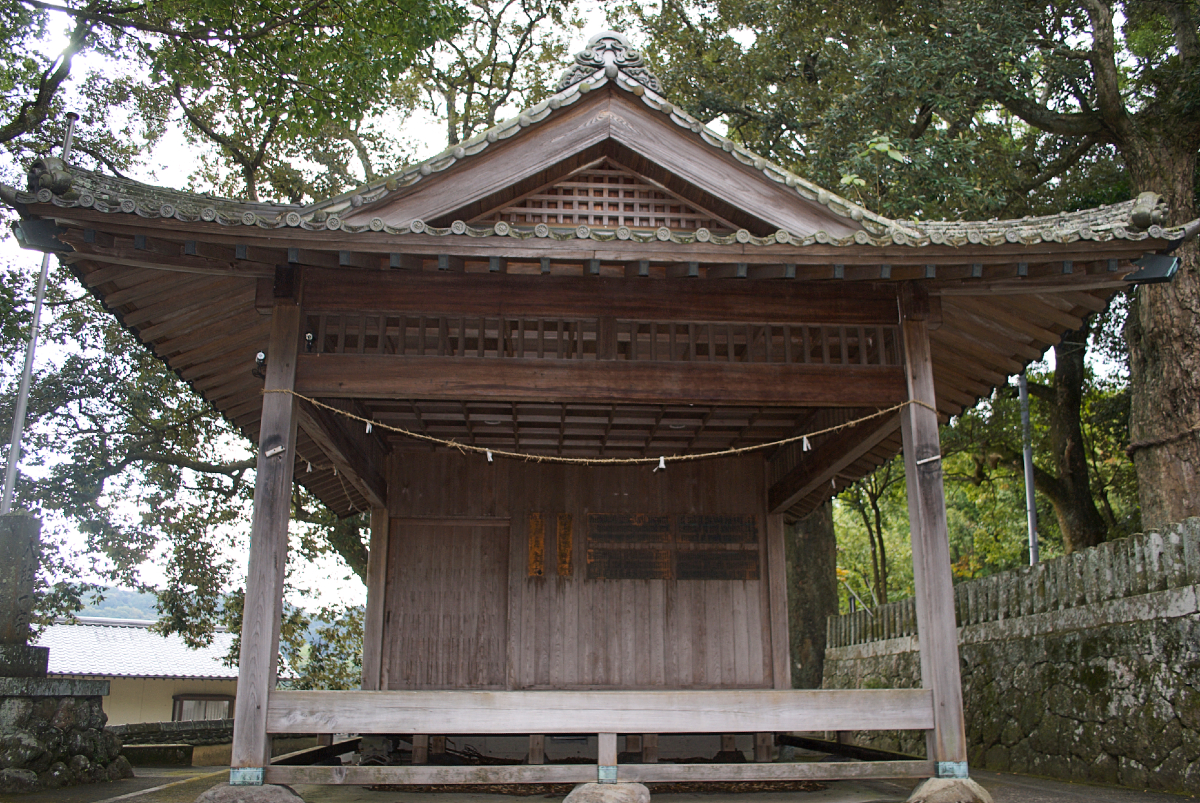
Kagura
At this shrine, they perform the Kagura dance only once, from New Year’s Eve to New Year’s Day. The Kamado clan of Kimetsu No Yaiba also perform Hinokami Kagura during New Years, which plays an important role in the story.
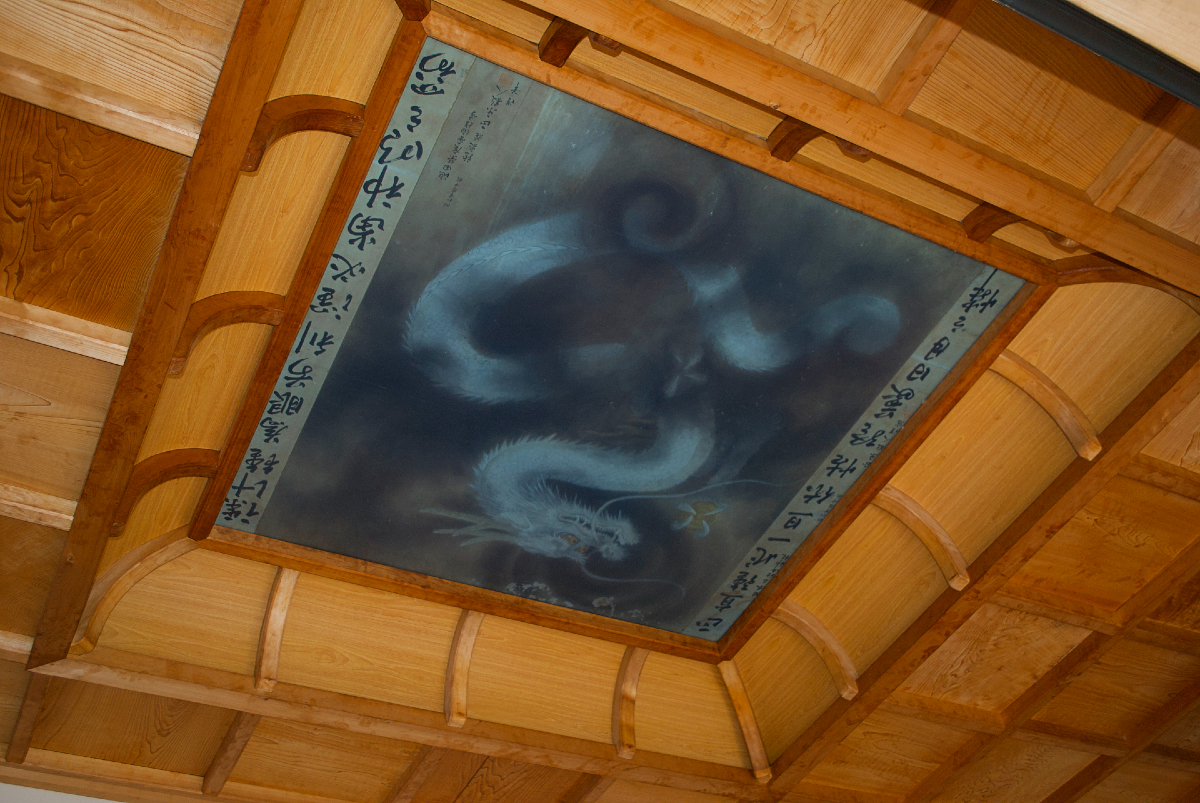
Dragon
On the haiden or worship hall, ceiling, there is a painting of a dragon. This is Ryujin, the same dragon god that was sent to reform the oni villain. Fans say the demon-taming dragon looks like Tanjiro Kamado’s special attack.
Bamboo
The main character’s beloved sister, Nezuko Kamado, wears a muzzle made of bamboo, the crafting of which Beppu is famous for.
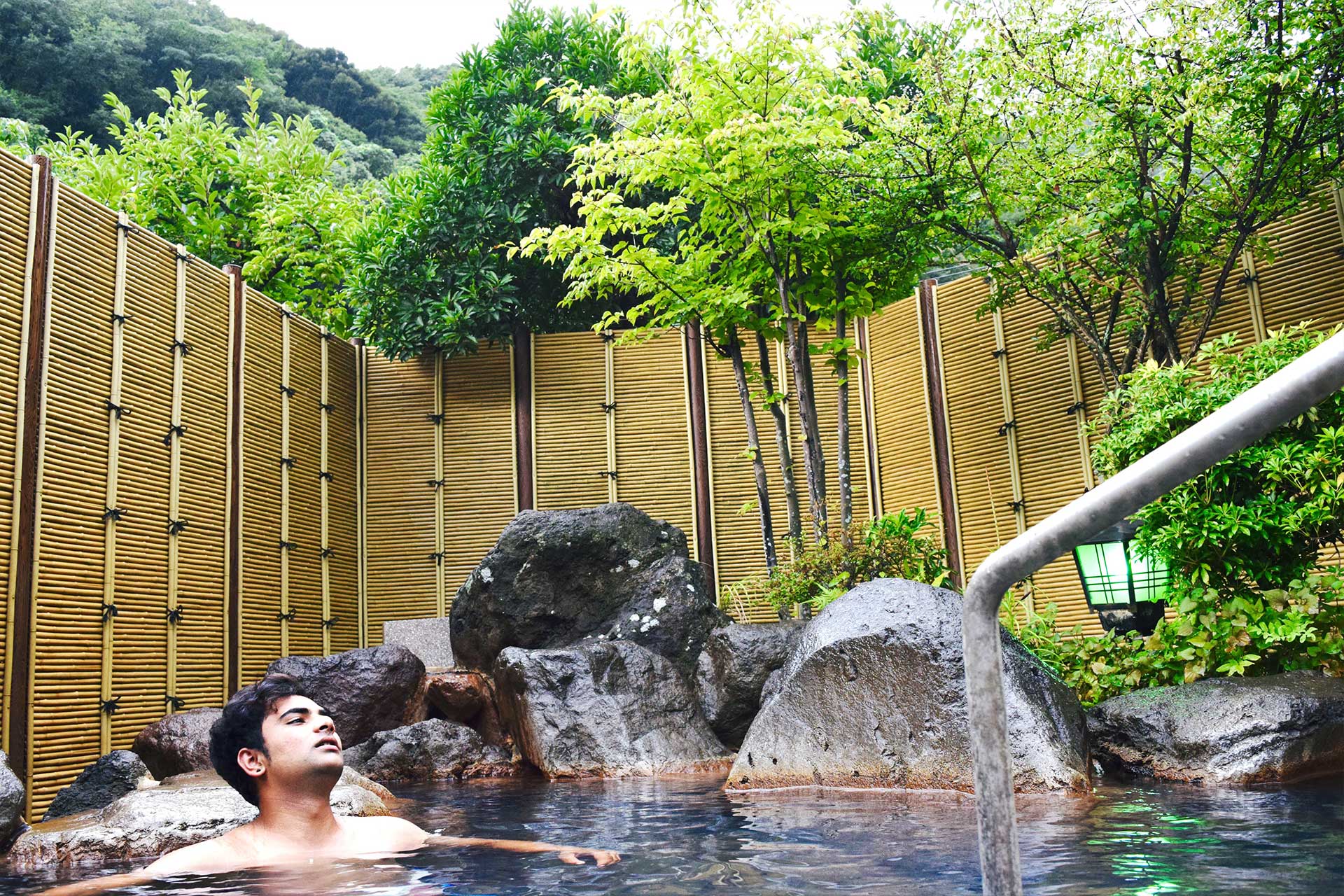
Onsen
The sword smith village featured in the comics has multiple onsen, which the villagers use for their healing properties. Beppu has long been known across Japan as the number one source of onsen and thus, the perfect place for onsen healing. You can read about the practice of onsen healing called “toji” here!
Visiting The Shrine
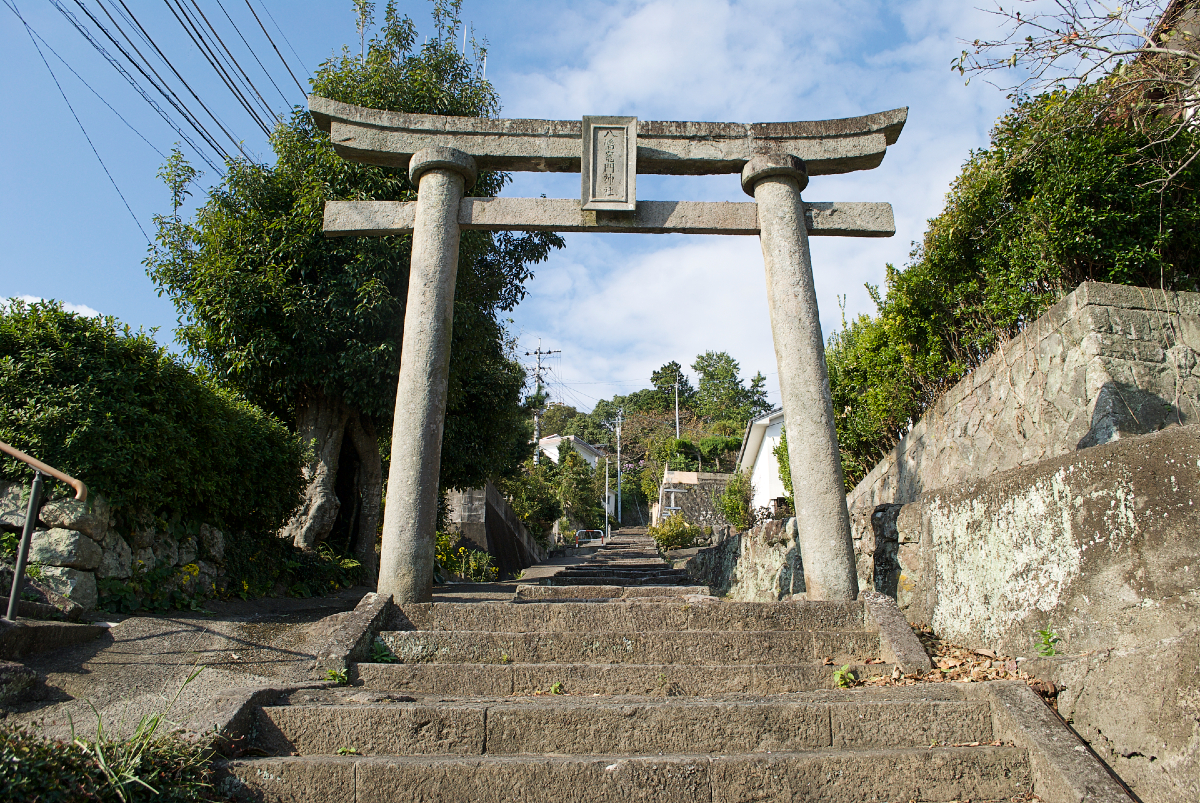
If you choose to visit Hachiman Kamado Shrine, you will indeed be able to climb the steps that the demon supposedly built so long ago.
(It is a 20-30 minute bus ride from Beppu Station on the No. 26 Kamenoi Bus.)
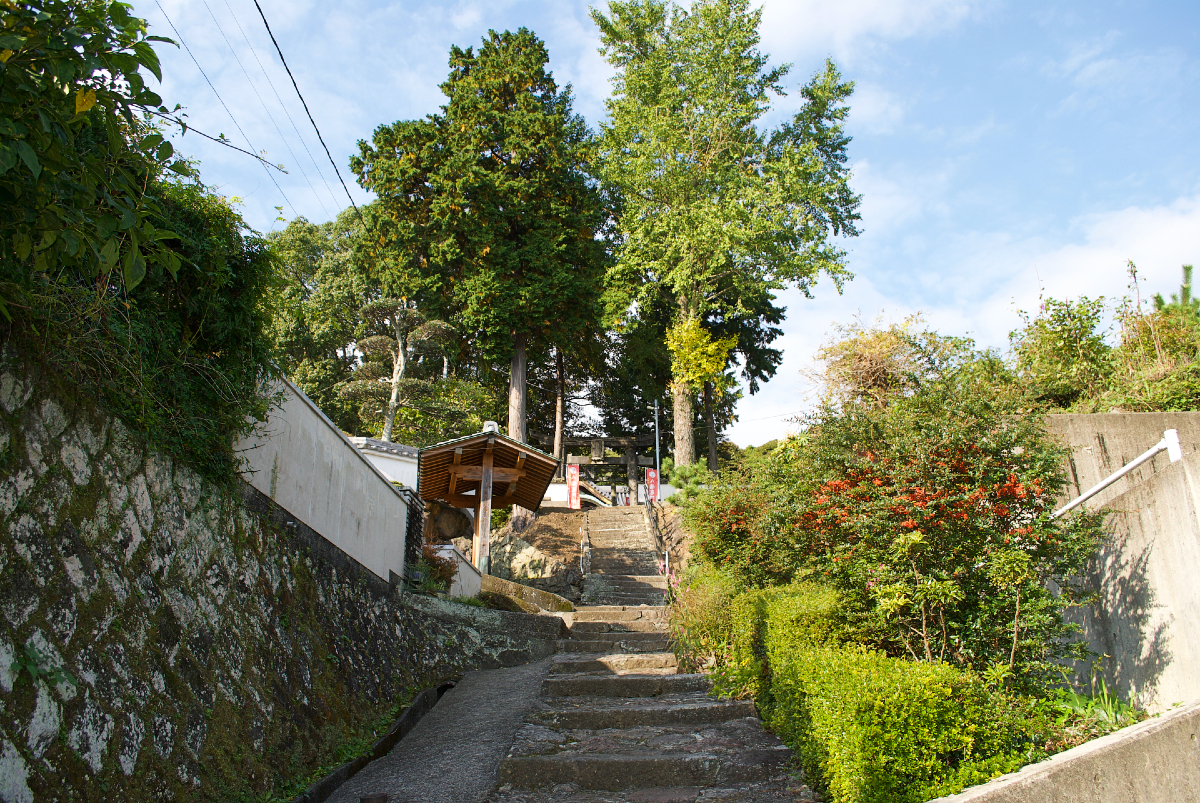
Though most of the steps are neatly put together, you can see toward the top they look hastily thrown together as it was said the demon was rushing to finish before sunrise. You can feel the history that extends long before Kimetsu No Yaiba, anime, or manga ever existed.
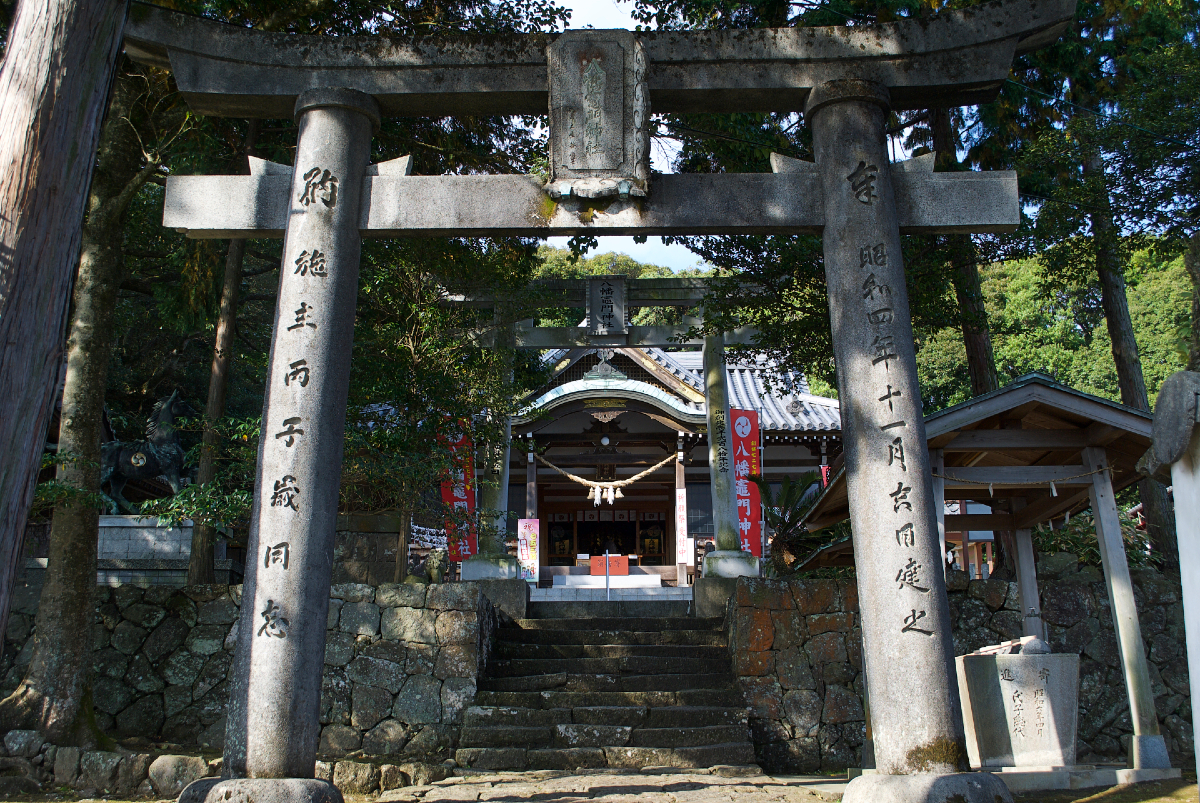
Upon entering the shrine through the torii gate, you will immediately notice Kimetsu No Yaiba pictures and goods at the “shamusho” or shrine reception office.
Don’t fear Yaiba fans! The miko san or shrine maidens here are very knowledgeable. They can explain each spot important to the series and give you a map. For simplicity’s sake, they have a chart listing all the references from the series.
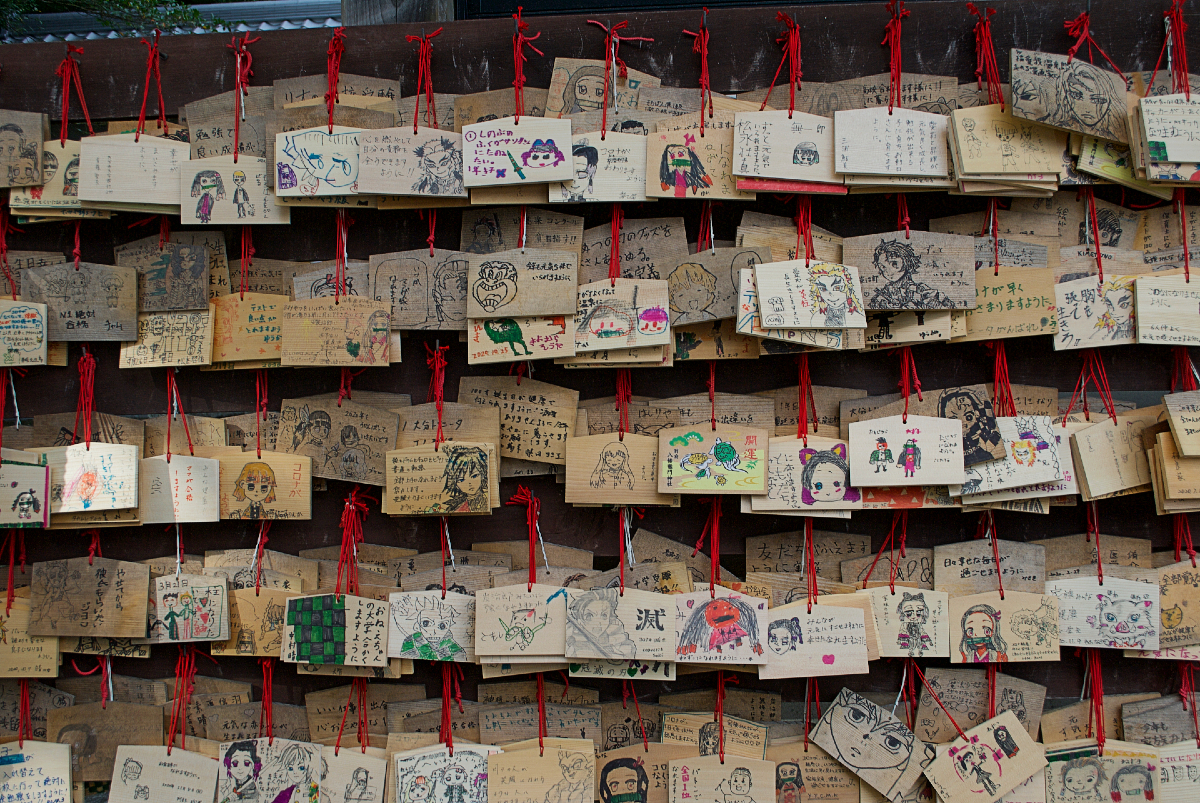
If you approach the haiden, or worship hall, you will see rows upon rows of ema painted with various characters. (Ema are wooden plates on which worshipers write their wishes or thanks to the gods). According to the staff, Kimetsu No Yaiba fans began flowing in since February of this year. Now, they make up 90% of total visitors!
When your humble writer made a visit early morning, the place was indeed bustling. One visitor from Saitama claimed that he decided to stop by the shrine while he was onsen hopping in Beppu, but others have come from far away just to visit this holy place.
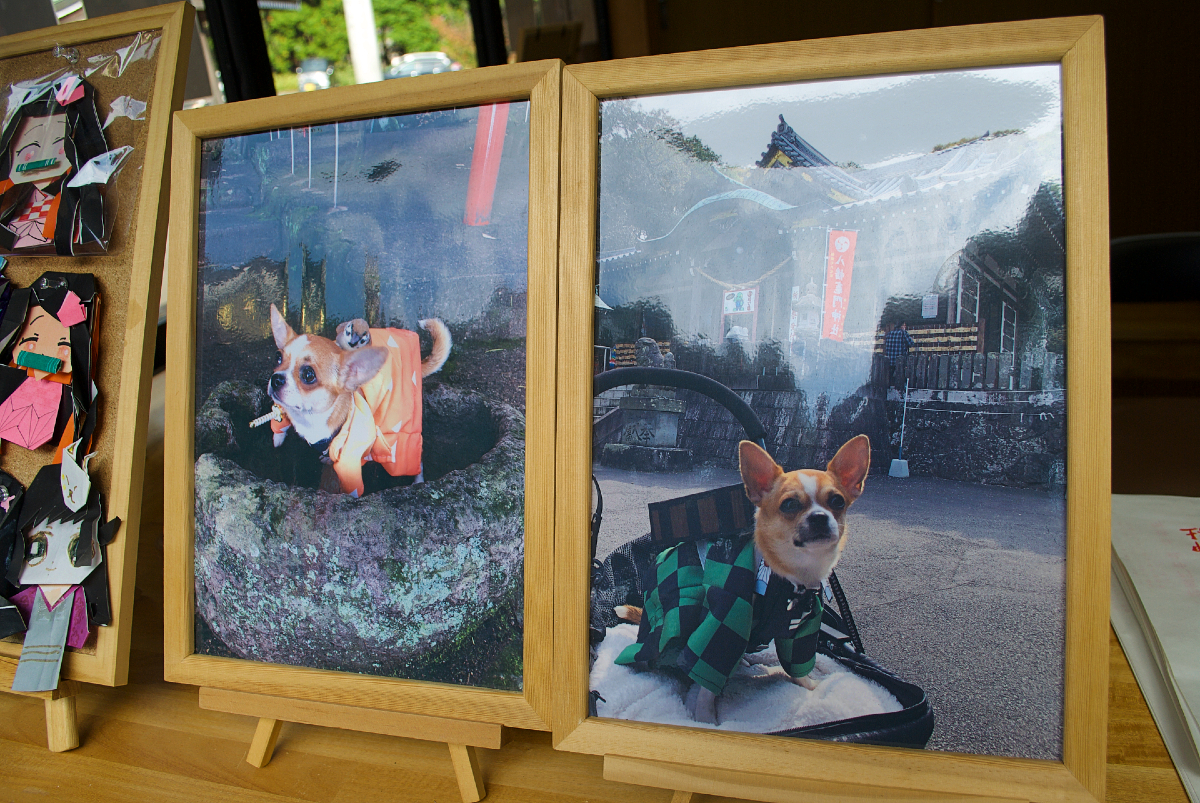
This particular fan has visited the shrine on 4 separate occasions, each time with a new costume to present to the shrine!
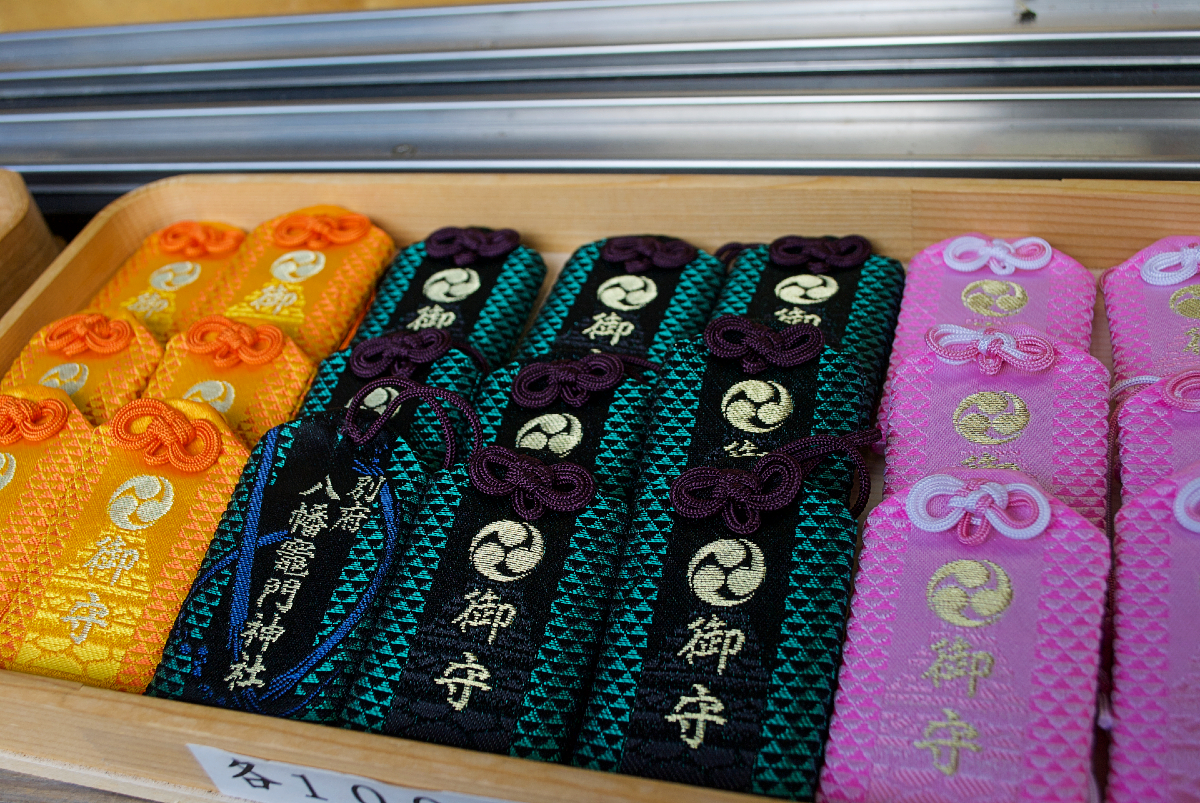
Demon Slayer: Kimetsu No Yaiba Omiyage
For the fans out there, you will definitely want to pick up these special Kimetsu No Yaiba charms or “o mamori.” Their designs are based on the clothing patterns of Zenitsu Agatsuma, Tanjiro, and Nezuko, respectively. Kamado shrine made these exclusively for the fans, so any collector must have them!
Kimetsu No Yaiba And Kamado Jigoku
The legend continues at Kamado Jigoku, one of the famous Hells of Beppu, where the oni now serves as gatekeeper. Below the statue of him, you will see a blue dragon, the god that has been sent to ensure he will commit no more evil deeds.
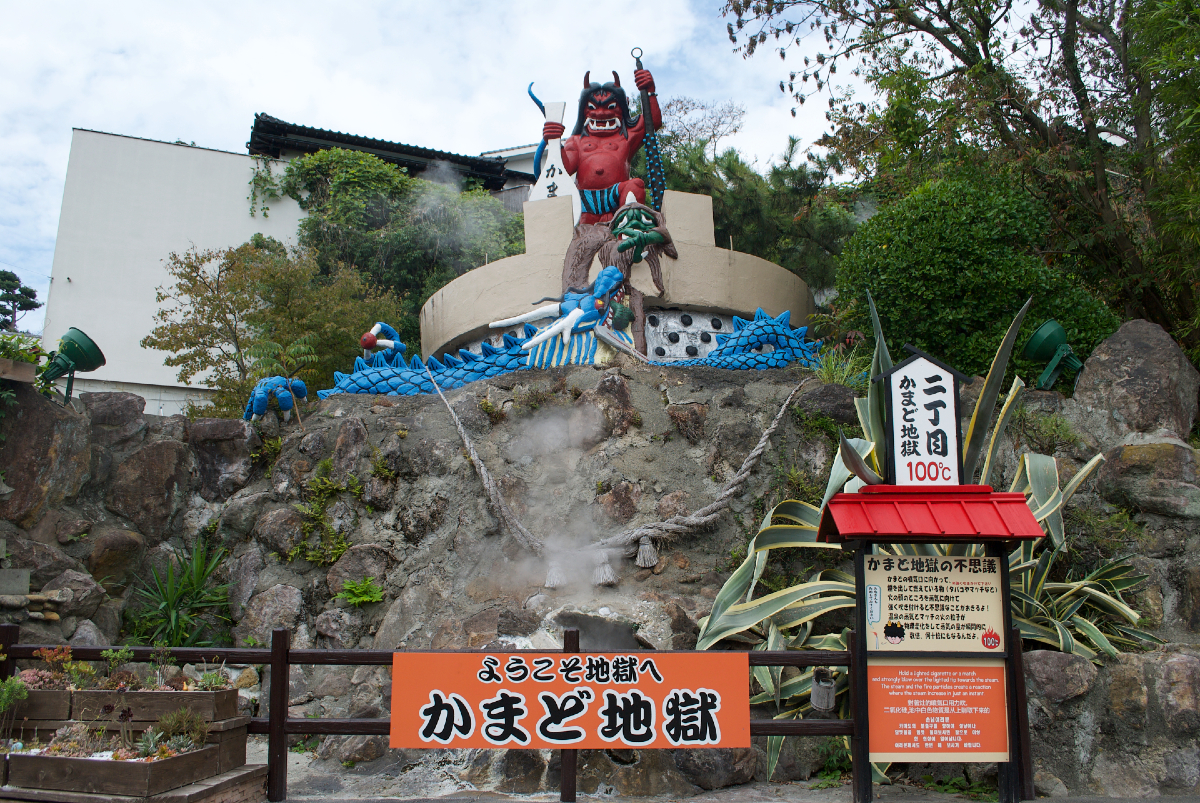
There are even more connections to Kimetsu No Yaiba to be found here!
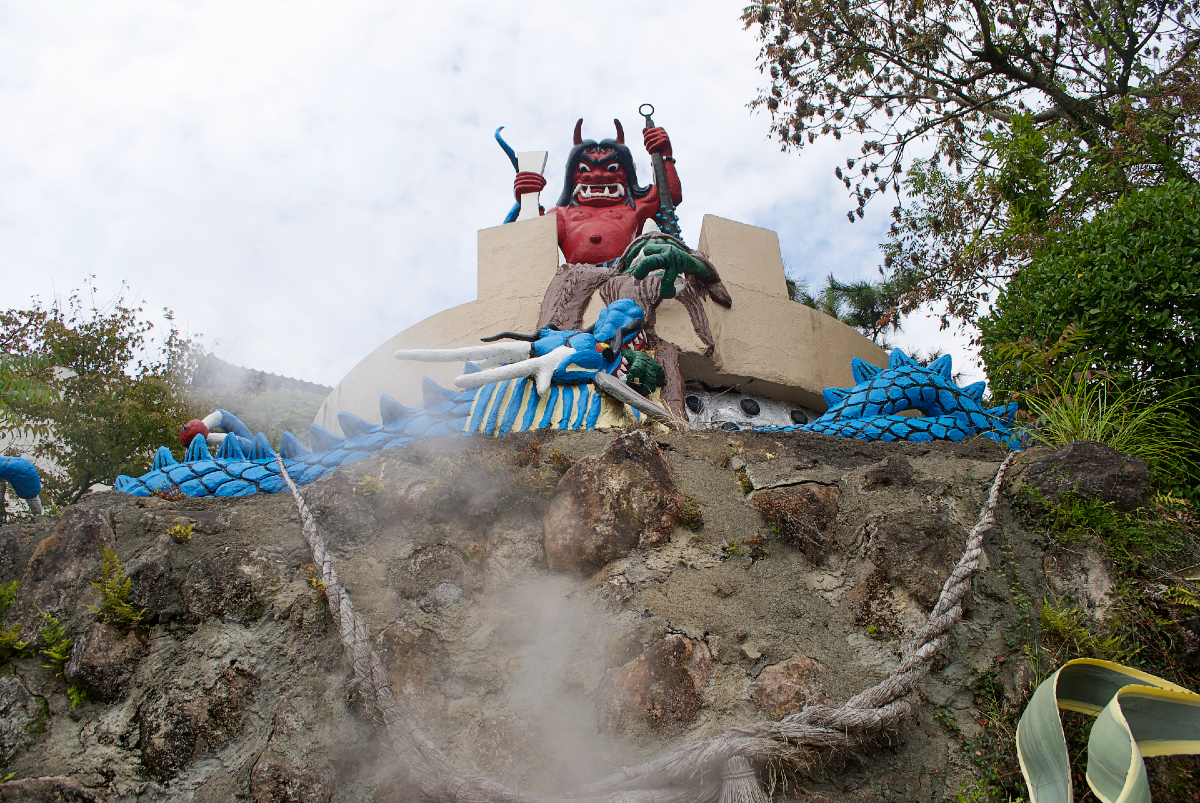
There is a “shimenawa,” or a rope used as a talisman that looks like the same one attached to the boulder Tanjiro broke.
Also, wisterias called “fuji no gi” have flowers that bloom at Kamada Jigoku from May to June. In the series, it is these same flowers that are said to be flowers that keep demons away.
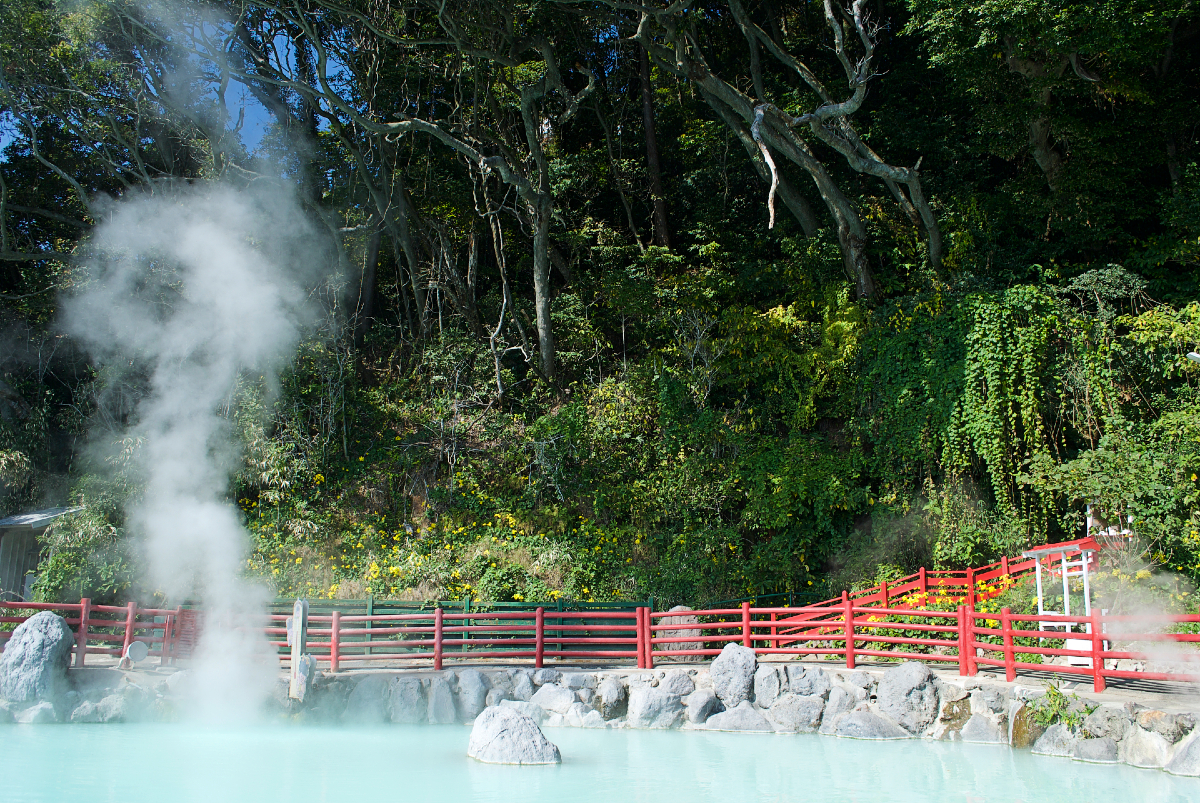
Kamado Jigoku houses a variety of “Hells” within its walls, making it one of the most beautiful and varied spots of the Jigoku Meguri Tour. You can experience “insen,” foot bath, a steam bath and more! It is a great opportunity to see the beauty of nature of Beppu as well as its influence on local legends like that which inspired the anime.
Nearby Recommendations
If you happen to make your way to this holy spot, you might as well enjoy all that Beppu has to offer. Just a five minute bus ride from Kamado Shrine will take you to the famous “Red Hell,” Chinoike Jigoku. Also nearby is one of our favorite onsen, Shibaseki Onsen. Otherwise you can head to Kannawa to Kamado Jigoku to see where the legendary demon now resides. From there, 4 more Beppu Hells are within walking distance as well as a bunch of Japanese hot springs to bathe in!
Before the Yaiba craze, locals knew Kamado Shrine as a place where soccer teams came to pray for victory. Now, thanks to this mega-hit anime, a light has been shown on this cultural landmark. Even if it’s connections to the series is still just speculation, it is well worth the visit. Regardless, Kamado Jigoku is filled with atmosphere and history, and should be a destination for fans and others alike.
